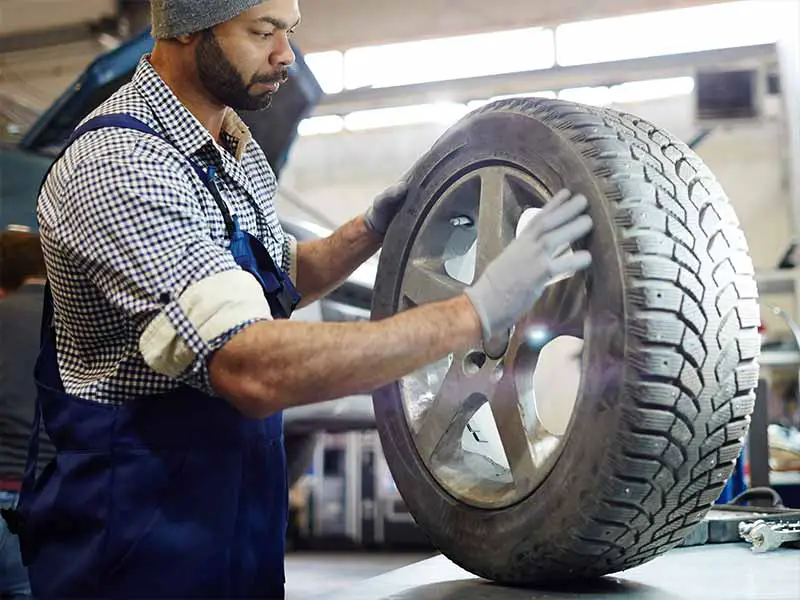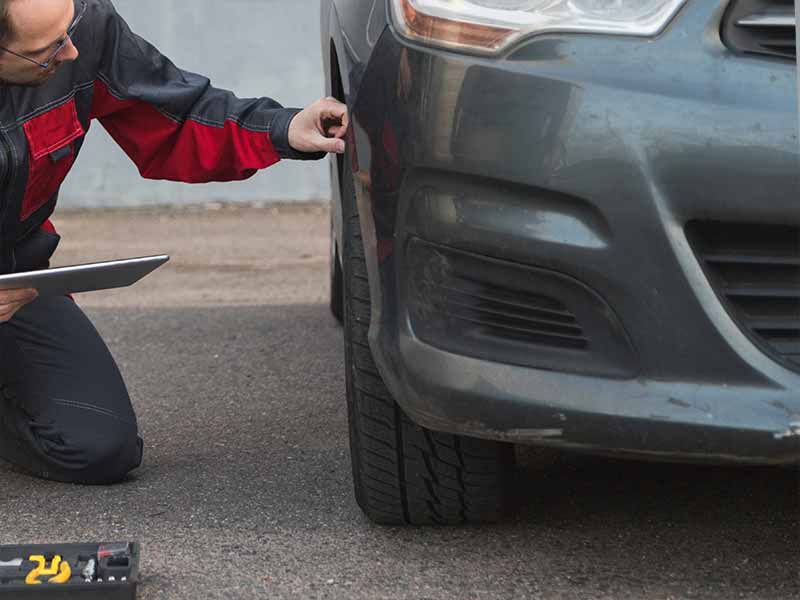Car tires wear unevenly and you need to regularly rotate your tires to help them wear evenly for a smoother ride and longer tire life.
You should also rotate your tires to meet the requirements the tire manufacturer has for maintaining your tire mileage warranty.
But what if you rotate your tires more often? Maybe it’s convenient to just have them rotated every time you come into the shop for maintenance?
Can You Rotate Tires Too Often?
You can’t rotate tires too often. As long as you are having your tires rotated before the tire manufacturer’s requirement and can provide proof you have met their requirements, your tire warranty will be honored.
Let’s dive into the details of rotating your tires and what proper rotation is.
Is It Bad To Rotate Your Tires Too Often?
It’s not bad to rotate your tires more often than recommended, but the benefits of rotating tires more often than every 5,000 miles is likely not worth the time, even if you have access to free tire rotation.
I would try to keep the intervals between tire rotations as equal as possible to allow each rotation to maximize its benefit.
For instance, depending on tire rotation patterns, rotating your tires back to the same positions shortly after a rotation and then not rotating them again for a while can reduce the effectiveness of having your tires rotated.

How Many Times Can You Rotate Your Tires?
You can rotate your tires as many times as you like. As long as you are meeting the minimum schedule the tire manufacturer requires to maintain your tire warranty, you will have no problems.
Excessive tire rotation will not do any harm but the benefits are minimal and not really worth the time and effort required. If you’re simply having the service performed along with another regular vehicle maintenance service, there’s no harm and this is a good practice.
How Often Should You Rotate Your Tires?
Rotating your tires on the schedule that your tire manufacturer requires to maintain your tire warranty. This is usually every 5,000 miles or slightly more.
Check the paperwork provided when you purchased your specific tires to see what is required for you.
Every car or truck will experience tire wear on different positions at different rates. A front wheel drive car for instance, will usually wear through two or more sets of tires before the rear tires need replacing if tire rotations aren’t performed.
The front tires take the most cornering wear and are relied on for grip when accelerating. This causes them to wear down significantly more quickly. Rear wheel drive vehicles will wear rear tires more quickly.
All wheel drive vehicles distribute the wear patterns more evenly between the front and rear wheels but wear patterns are still different between the front tires and rear tires.
No matter which axle has the driven wheels, regular tire rotations will help smooth out uneven wear patterns of all the tires.
Is It OK To Rotate Tires Every 10,000 Miles?
You shouldn’t wait 10,000 miles to have your tires rotated. This will most likely be much longer than the tire manufacturer requires to maintain the tire mileage warranty and they will not honor it if you try to make a claim.
People often ask about 10,000 mile rotations because older guidance was rotating your tires at the same time as your oil change. Oil changes used to be performed every 3,000 to 5,000 miles.
With the advent of synthetic oils and advancement in engine designs, oil changes commonly don’t need to be performed as often and 10,000 miles has become a more common interval to have an oil change performed.
What Happens If You Rotate Tires Wrong?
There aren’t many ways to rotate tires wrong. But there are a few circumstances that limits how tires can be rotated.
Directional Tires
Directional tires can only be rotated front to rear and can not be rotated side to side. This is because directional tires will be spinning in the wrong direction if you switch the sides of the vehicle.
Directional tires have an indicator on the sidewall that shows what direction the tires are designed to spin. As long as that arrow is pointing forward, directional tires will be able to perform properly.
Staggered Wheels
Staggered wheel sets are only able to be rotated side to side. Staggered wheels are when the wheels on the front axle are a different size than the wheels on the rear axle.

This is common with sports cars for instance. Rear wheel drive sports cars often have wider rear tires to help prevent oversteer.
When Not To Rotate Tires
Tire rotation should not be performed if you have both directional tires and staggered wheels due to the limitations in rotation that these issues create.
You should also not rotate your tires if it means that a tire with 4/32″ or less tread depth will be rotated to the rear.
Tires gradually lose their ability to shed water effectively as they wear down and a tire with only 4/32″ of tread wear left is in need of replacement and not very effective at dealing with wet weather conditions.
Is Tire Rotation Necessary?
Tire rotation is necessary to maintain your tire mileage warranty. If you are not concerned with the ability to make a claim against your tire warranty if the tires don’t last as long as the tire manufacturer claims in the warranty, it can be skipped.
There are other benefits to tire rotation aside from simply extending the life of your tires. While tread life is the main point of tire rotation, a smooth, vibration-free, and quiet ride are also benefits.
The other primary benefit that I feel is often overlooked is by having eyes on your tires regularly you will have uneven wear spotted much more quickly. Uneven tire wear is a symptom of other problems. Usually the problem is an alignment issue or a tire balance problem. It could also be a result of tire damage.
How Much Longer Will Tires Last If Rotated?
The amount of extra tire life gained from rotating tires varies on a lot of factors, but 25% additional tread life is not uncommon.
Conservative drivers with conservative suspension geometry may see very little benefit, while aggressive drivers with aggressive suspension geometry settings may see huge improvements – even doubling the life of their tires in some circumstances.
Do Tires Need To Be Balanced And Aligned When Rotated?
Tires do not need to be balanced or aligned when rotated. I do recommend that both of these tire maintenance services be performed every other tire rotation.
5,000 miles is a good tire rotation interval and 10,000 miles is a good interval for tire balancing and alignment.
Final Thoughts
Rotating your tires every 5,000 miles is a good rule. However, you should make sure that your tires are being rotated according to the requirements of your tire warranty. 5,000 mile intervals will usually meet or exceed these requirements.
Rotating your tires more often is perfectly fine, however you should try to keep the time between tire rotations even to maximize the benefit that rotating your tires provides.
There is no good reason to rotate your tires more often than the tire warranty requires since the additional benefits will be small, but it won’t hurt and it won’t cause issues with your tire warranty.
Resources
Below are some links you may find helpful when learning about tires




